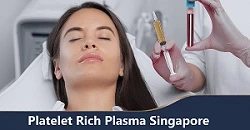Platelet Rich Plasma (PRP) Therapy Treatment
A concentrate of the patient\'s own platelets is used in platelet-rich plasma (PRP) therapy to hasten the healing of damaged tendons, ligaments, muscles, and joints.
In essence, PRP therapy helps patients with musculoskeletal issues by utilising their own healing mechanisms. Platelet rich plasma is not a new technology; it has been utilised for more than 25 years in plastic surgery, general surgery, otorhinolaryngology, and oral and maxillofacial surgery, with numerous case series studies demonstrating an improvement in overall soft tissue recovery.
Plasma in the PRP concentration contains considerably more platelets than are ordinarily present in the blood. The function of platelets in clotting blood is their most well-known function.
They also include a large number of proteins known as growth factors, which are crucial for the healing of wounds. There may be a 5–10 times larger (or richer) concentration of platelets and, consequently, growth factors in PRP than typical.
Platelet Rich Plasma (PRP) – what is it?
When injected, platelet rich plasma (PRP) is a material that is supposed to accelerate healing. Researchers have developed PRP by concentrating and extracting plasma from the blood. These injections have been used by athletes in the past to aid in the healing of wounds.
How does PRP Therapy work?
An outpatient procedure, a PRP injection allows a patient to be treated and go home the same day. Obtaining the patient\'s blood is the initial step in this therapy approach. The next step involves spinning the red blood cells in a centrifuge, a machine that separates these components, in order to separate them from the white blood cells and platelets.
The platelets are concentrated as a result of this. Finally, the platelets are injected, perhaps with the aid of ultrasound, into the patient\'s wounded body tissue. In addition to aiding in clotting, platelets also contain growth factors that are essential for hastening the healing of the wounded body part.
The patient can suffer some slight pain or irritation at the injection site for a day or two after the operation. The only post-procedure care needed is for the patient to rest and simply apply ice or a cold compress to the injection site to ease any pain.
Few dangers and problems are associated with PRP injections. Nevertheless, a patient could encounter an infection, tissue harm, more discomfort where the injection was made, or damage to nearby nerves.
Conditions that are deemed eligible for PRP therapy
In the patient groups listed below, PRP treatment has been successful in promoting hair growth:
It is considered helpful for people who are going through:-
- Pattern hair loss in both men and women
- Round hair loss patches are called alopecia areata.
- Alopecia totalis, or total hair loss
- Hair falling out
- Breakage at the midpoint
- Early baldness
Singapore is where this PRP hair loss treatment is most readily offered.
What conditions can PRP treat?
PRP injection or PRP therapy is typically used to heal damaged cartilage, tendons, ligaments, muscles, bones, and other soft tissues. Moreover, it is also used for the treatment of some common conditions like knee osteoarthritis or knee pain, patellar tendonitis, plantar fasciitis, Achilles tendonitis, tennis elbow and rotator cuff tendonitis.
What are the benefits of PRP Therapy?
There are several benefits of PRP therapy, including the following:
- Non-Scarring
There are essentially no scars after PRP treatment. Since no wounds are created during the technique\'s completion because of the use of needles, no scars are left behind. This suggests that any obvious bodily part, such as the arms, legs, or even the face, would receive extraordinary treatment.
- Safety
As your own blood is used to heal your body, PRP treatment is a safe procedure with no risk of rejection. Furthermore, there is almost no chance of contamination because there are no access points.
- It is non surgical
When compared to surgery, non-surgical PRP treatment is a non-employable procedure that significantly reduces the recovery period and pain. This minimally invasive technique just requires a needle to draw blood, which is followed by injecting platelet-rich plasma into the damaged tissue.
- Increase hair volume and health
Hair follicles are one part of the body where platelet-rich plasma can speed up healing. This procedure is frequently used by dermatologists to stop hair loss, thicken hair growth, and enhance hair diameter. Plasma therapy helps in increasing the volume as well as the health of the hair.
- Pain relief and increased mobility
Joint pain is widespread and can be brought on by a variety of conditions, including arthritis, overuse injuries, and regular aging-related wear and tear. The PRP\'s mending abilities lessen pain and stiffness in joints while increasing mobility.
- Enhance the speed of healing
PRP is a type of regenerative medicine that aids your body\'s inherent ability to heal itself. Your blood carries platelets to the site of the wound to halt the bleeding and heal the wounds.
The area of the injury or a weak blood supply can sometimes make the healing process delayed or ineffective, and although your body has all that it needs to do it.
What are the risks and adverse reactions of PRP therapy?
The soreness at the injection site may last for two to three days, but it normally goes away after that. Additionally, because it creates swelling in the already painful location, you can initially experience additional discomfort. For the blood cells to start assisting in your long-term healing, swelling is necessary. To help you feel better, the doctor may give you some painkillers.
Over the past two years, PRP prolotherapy has been used to treat patients in Singapore. PRP injections may be used in Singapore to treat ligament and tendon problems, according to instructions from the Ministry of Health Singapore.



